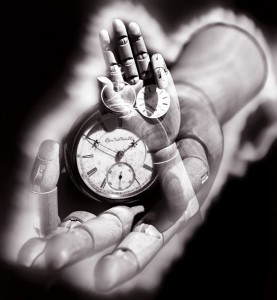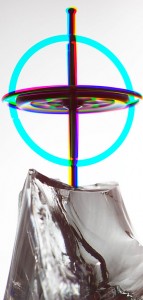Some years ago a friend, who had moved from making photographs to making ceramics, explained that ceramics is a mature art form. He meant that, after thousands of years of making ceramics, everything that could be done had been done. Photography is still changing because, in part, the technology is still changing. The interaction between light, subject and sensor or film is still not completely mapped out. I’ve included a couple of my favorite experimental images this week.
As artists we approach the whole territory in different ways. A person can choose to make images by using craft, the tools of the known territory. These skills can enable the artist to produce commercial art and fine art. The idea is to map the unknown by starting from the known and using the known tools. Personally I am comfortable with this approach. The alternative is to begin and try to understand the territory from the inside. This is a more intuitive, less empirical, approach to the unknown. Clearly there are people who work well in this way, but it is difficult. There will be a lot of repetition and failure. Really very few artists have the strength to endure this method. Yet many people try it, often becoming quite frustrated.
One of the reasons that people want to work intuitively is that photography has a large intellectual component compared to other arts. For instance the harp is a very simple instrument: you pluck a string and you hear a tone. Assuming the harp is in tune the next time you pluck the string you will get the same tone. A concert harp will have pedals to control the how long the note sustains. A camera has more complex choices than a harp. To carry the analogy a little further, both tools belong to larger fields of understanding: music and imaging. Both fields have a tremendous amount of experience and information about what makes good art. But photography, as a small part of imaging generally, also has a huge amount of technical information about capturing an image. Certainly there are musical instruments that have this kind of technical component, but not the harp.
The harp, indeed any musical instrument, requires practice so that you can translate musical ideas into the performance of music. Certainly the camera also requires practice. In both photography and music one of the advantages of practice is that it allows you to work more intuitively, translating ideas into music or images quickly and confidently. A big part of what a music teacher does is to guide your practice. Photography requires more than practice: you need to develop a personal map of the known territory. While you can create without the map there will be a lot of frustration. Fortunately there are many good maps in books and classes available.
Personally after more that thirty-five years of active photography I am still refining my map. And I am still walking on trails I haven’t traveled before.
You can see some of the territory I’ve mapped out: you can read my articles here and pre-order my book here. If you would like to see some more of my map please consider taking one of my classes.
An Introduction to Photographic Lighting


Contact me at john@siskinphoto.com for information about using the posts. Thanks, John
Comment by John Siskin — June 25, 2011 @ 12:30 pm